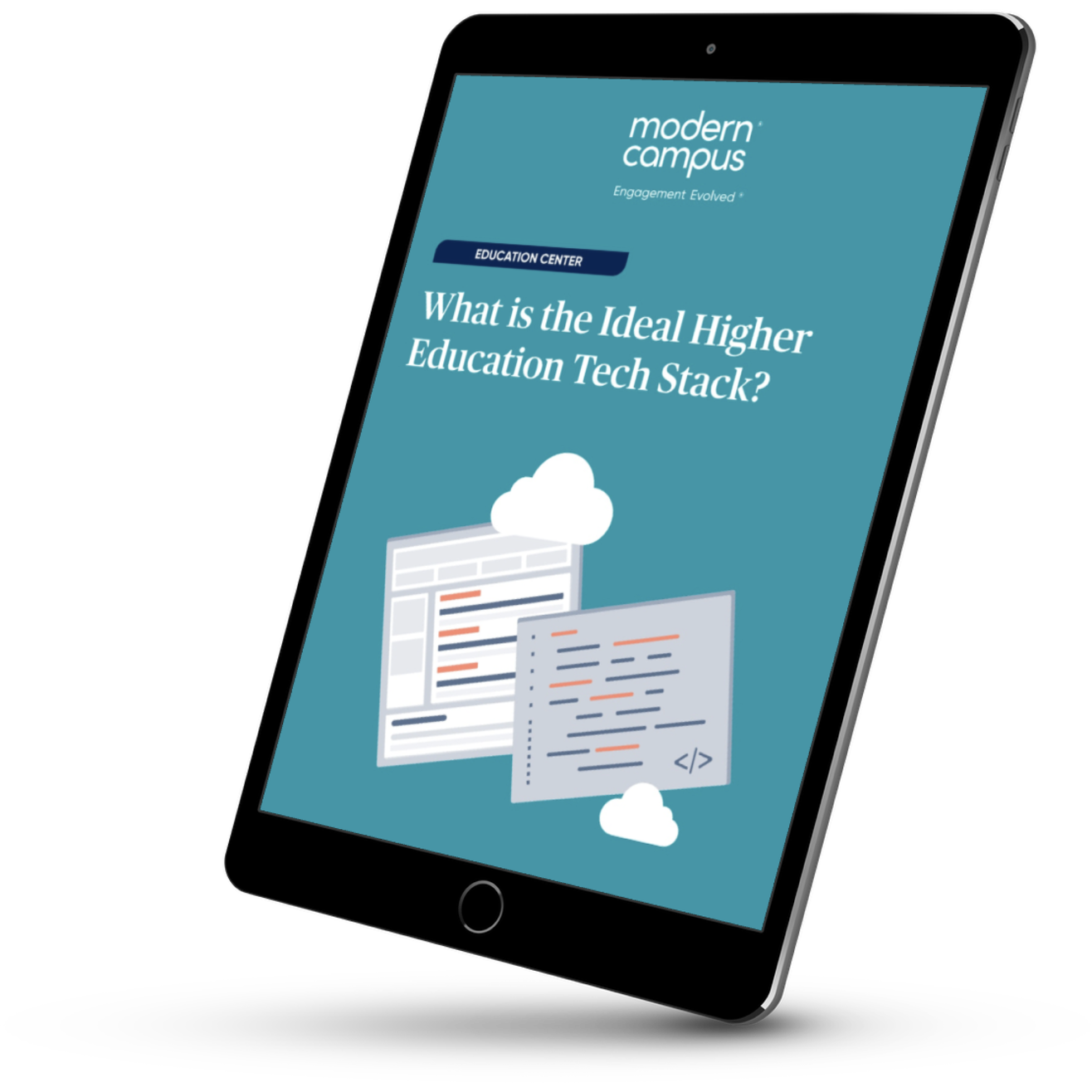The Keys to Communicating with Modern Learners: 3 Lessons from College Executives
High-impact practices do so much more than the name reveals, and must hit many hidden qualifiers to accurately and deservedly be considered HIPs.
To get into that, let’s reconnect with educational researcher and theorist George Kuh.
In his 2008 ebook, High-Impact Educational Practices: What They Are, Who Has Access to Them, and Why They Matter, published by the Association of American Colleges and Universities, Kuh detailed six essential qualities of the very best co-curricular experiences.
These experiences aren’t one-time programs that offer students free pizza and little else; they are long-term experiences that are intentionally designed to foster student success during learners’ time at the institution and beyond.
That is what makes them high-impact practices.
Modern Campus interesting Block Quotation can goes in this spot, and be nicely styled like this. Our quotes tend to be on the longer side. Lorem ipsum dolor sit amet consectetur adipiscing elit donec odio.
Features of High-Impact Practices
According to Kuh, HIPs must offer:
- Considerable time and effort requirements for students
HIPs “demand that students devote considerable time and effort to purposeful tasks [and] require daily decisions that deepen students’ investment in the activity as well as their commitment to their academic program and the college.” - Meaningful interactions between faculty and students:
They challenge students to interact with faculty and peers “about substantive matters, typically over extended periods of time.” - Collaboration with people of diverse backgrounds
HIPs “increase the likelihood that students will experience diversity through contact with people who are different from themselves… [and] challenge students to develop new ways of thinking about and responding immediately to novel circumstances as they work side-by-side with peers on intellectual and practical tasks, inside and outside the classroom, on and off-campus.” - Constant, Consistent Feedback
HIPs offer frequent feedback about their performance, and “because students perform in close proximity to supervisors or peers, feedback is almost continuous.” - Opportunities to apply concepts in real-world settings
They provide opportunities for students to “see how what they are learning works in different settings, on and off-campus.” - Reflection and integrative learning opportunities
HIPs “deepen learning and bring [students] values and beliefs into awareness … [they] help students develop the ability to take the measure of events and actions and put them in perspective. As a result, students better understand themselves in relation to others and the larger world, and they acquire the intellectual tools and ethical grounding to act with confidence for the betterment of the human condition.”
Key to this all is intentionality. Other campus experiences — such as membership in a student organization or orientation attendance — may happen to gift students some of the same learning outcomes as HIPs but they are unlikely to meet the high bar set by all six qualities outlined by Kuh.
That means that, even if you’re well-versed in planning campus you may have never created nor facilitated a high-impact practice.
But unless you’re literally retiring tomorrow, it’s not too late to get started. You should feel motivated to do so because just as high-impact practices are more demanding in their expectations of students, they also offer more rewards than non-HIP programs—for individual students and for the institution as a whole.
Benefits of High-Impact Practices
hbrdsthrdthdrsethedt
Kuh, along with Jillian Kinzie, Jayne E. Brownell & Lynn E. Swaner, found that HIPs are positively associated with:
- Persistence and GPA
- “Deep approaches to learning”
- Higher rates of student-faculty interaction
- Increases in critical thinking and writing skills
- Greater appreciation for diversity
- Higher student engagement overall
All of this means that students involved in HIPs are more likely to stay enrolled, graduate with strong GPAs and impress prospective employers with their acquisition of essential skills.
Or put simply:
“High-impact practices can help students develop skills that are essential in the workplace and that transfer to a wide range of setting —such as communication, problem solving and critical thinking. In addition, they can give an institution a distinctive and competitive edge at a time when many colleges and universities are struggling to maintain enrollments.” — Richard F. Vaz, director of the Center for Project-Based Learning at Worcester Polytechnic Institute, writing for Inside Higher Ed
What’s more, Ashley Finair and Tia McNair found these benefits to be even more pronounced among students who identify with historically marginalized demographics.
“Historically underrepresented or underserved (e.g., racial minorities, first-generation) students who participated in more than one high-impact practice reported significantly greater gains in ‘deeper learning’ and learning outcomes than their peers who reported involvement in only one high-impact practice.” — Summary from the Center for Engaged Learning
Ideally—and to truly transform the landscape of higher education—colleges and universities won’t merely offer a handful of high-impact practices that a small percentage of the student body will participate in. Rather, Kuh advises institutions to “make it possible for every student to participate in at least two high-impact activities during [their] undergraduate program, one in the first year and one taken later in relation to the major field.”

Last updated: June 24, 2022



